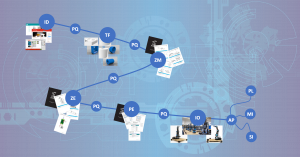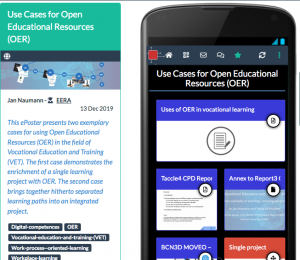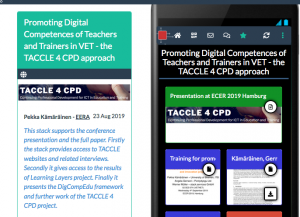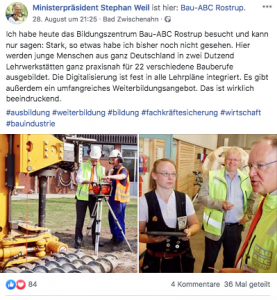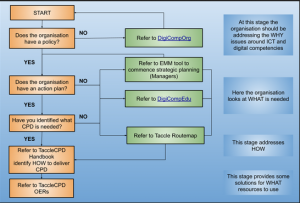Learning Toolbox going strong to the year 2020
Yesterday I had a lengthy catch-up talk (via Skype) with my Barcelona-based friend Gilbert Peffer. As regular readers of this blog know, we had worked together intensively in the EU-funded Learning Layers (LL) project and in the follow-up phase. For the success of the LL project it was crucial that Gilbert (on top of his other duties) engaged himself in the development of the Learning Toolbox (LTB). And as we know, the LTB was the key product of the project – and in particular of the Construction pilot. Yet, although the LTB was successfully implemented by construction sector partners, the follow-up phase has not been that easy.
No question, the LTB has pointed out to be a powerful digital toolset for supporting learning in different contexts of Vocational Education and Training (VET). Thanks to the successful implementation of LTB, the LL project was awarded with the VET Research Project Award of the European Vocational Skills Week in Vienna 2018. And during his visit as ‘apprentice’ in the training centre Bau-ABC the prime minister of the Federal State of Lower Saxony, Stephan Weil was very impressed of the use of digital tools that were presented to him by apprentices. Here, the use of LTB was essentially part of this success story.
Also, as we have noticed it during the years after the project, the ePosters powered by LTB have been taken up in numerous conferences. With this spin-off innovation the LTB developers had reached numerous conferences that have started used ePosters powered by LTB as an alternative for traditional posters or alongside them. Also, on this front the LTB developers have received several awards as remarkable service providers.
Indeed, I have blogged on all these success stories and celebrated with the LTB developers. And indeed, in my reports for the EU-funded TACCLE4 CPD I had highlighted the use of LTB with the expression “The Learning Toolbox path”. In this way I had set the approach to a wider context. I see it as one of the innovation paths for promoting digital competences of teachers, trainers and learners in the field of VET and as a contribution to vocational learning culture. So far so good. However, now that I am in the transition to the full retirement phase I was afraid that I loose sight of the development of this innovative approach.
From this perspective it was rewarding to hear the news of Gilbert. It strikes me that the LTB developers are making progress on all fronts – with uses of LTB in training and in events. Now the LTB developers are working with several German training centres in the construction sector – and our partners in the LL project serve as multipliers in promoting the use of the toolset. In addition it strikes me that they have found new ways to use LTB in the healthcare sector in England – and the healthcare pilot partners of LL have been co-developing the new working perspectives. Furthermore, other healthcare service providers in Spain have identified new ways to use LTB to support the relatives of patients who need training for sensitive issues in their engagement with the patients.
This all has shown me that the work with the LTB is not fading away – on the contrary, it is conquering new terrains. This triggered once again my instincts of accompanying researcher and of inspired blogger. Even if I go on retirement, I want to follow these processes as best I can and support my colleagues via blog posts. So, we agreed with Gilbert on a new format for our cooperation – a monthly Blogchat. In this way Gilbert (who is very busy with the practical work around LTB) can report in a quick way on recent developments. And I can then write blogs that give visibility for the innovation. In this way we are continuing our long and successful cooperation with the innovation that is worth celebrating.
More blogs to come …
